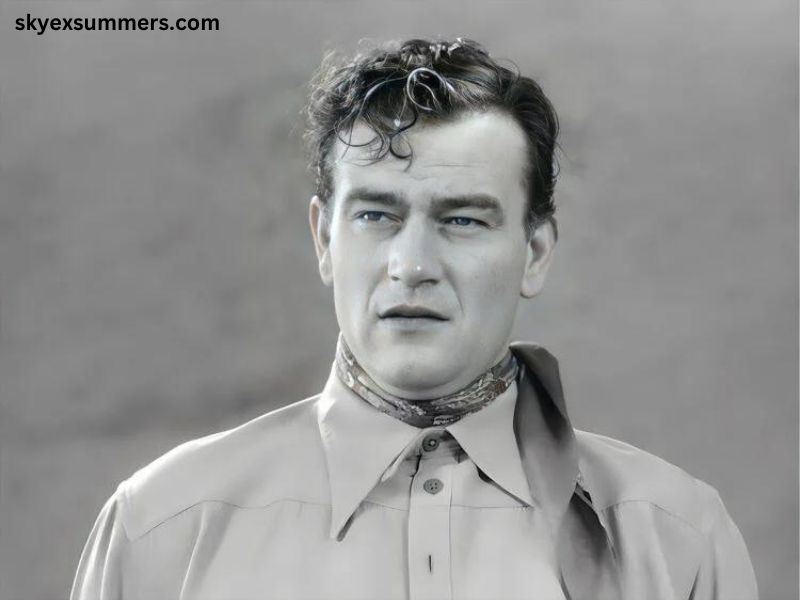John Wayne, an emblematic figure of American cinema, is often celebrated for his rugged charm, iconic roles, and larger-than-life persona. Born Marion Robert Morrison on May 26, 1907, Wayne starred in over 170 films, many of which have become classics. However, one question that often arises among fans and film historians alike is: how tall was John Wayne? While it might seem like a simple inquiry, it opens the door to discussions about his physical presence, the nature of Hollywood’s portrayal of masculinity, and the impact of his image on American culture.
The Official Height of John Wayne
John Wayne’s official height is commonly cited as 6 feet 4 inches (193 cm). This stature not only contributed to his on-screen presence but also reinforced the archetypal image of the rugged American hero. However, some sources have suggested that his height may have been exaggerated, particularly in light of various reports and conflicting accounts throughout the years.
A Closer Look at His Measurements
Wayne’s height was a significant part of his appeal, aligning perfectly with the Western genre’s archetypes of strength and dominance. In many of his films, such as “True Grit” and “The Searchers,” Wayne’s towering presence was utilized to convey power and authority. His stature allowed him to command scenes effectively, particularly in confrontations with other characters.
However, during the later years of his life, Wayne struggled with health issues, including lung cancer, which led to surgery and a gradual decline in his physical condition. Some accounts suggest that his height may have decreased slightly as he aged, but the official measurements from his peak remain significant.
The Cultural Impact of Wayne’s Height
The height of John Wayne transcends mere physical measurement; it symbolizes an era and an ideal. In the mid-20th century, Hollywood often favored leading men who embodied traditional masculine ideals—strength, bravery, and the ability to protect. Wayne’s stature made him an exemplar of these traits, and his characters often reflected the values of rugged individualism and heroism.
In films like “Stagecoach” (1939) and “Rio Bravo” (1959), Wayne’s height played into the visual storytelling, allowing him to stand out against other characters. His towering frame provided a stark contrast to the challenges faced by his characters, symbolizing an unyielding spirit in the face of adversity.
Comparisons to Other Actors
When examining John Wayne’s height, it’s interesting to compare him to other leading men of his time. For instance, actors like Gary Cooper (6 feet 3 inches) and Jimmy Stewart (6 feet 3.5 inches) were also known for their impressive heights. This trend of casting tall actors in lead roles established a standard for masculinity in Hollywood that has persisted in various forms to this day.
Wayne’s stature helped set him apart, but it also contributed to the broader dialogue about masculinity in film. The tall, broad-shouldered archetype became a template for future actors, influencing casting decisions in both Westerns and action films.
The Myth of the Larger-Than-Life Hero
The allure of John Wayne’s height can also be seen as part of a larger mythos surrounding the American hero. Wayne’s characters often faced insurmountable odds, and his physical size amplified the sense of triumph over adversity. This concept of the “larger-than-life” hero resonates deeply in American culture, where tales of brave individuals overcoming challenges form the backbone of the national narrative.
The physical attributes of such characters often reinforce societal expectations of masculinity, linking strength to height and presence. Wayne’s stature served as a visual representation of these ideals, making him a lasting symbol of American ruggedness.
The Evolution of Masculinity in Film
As film evolved, so too did the representation of masculinity. The 1960s and 1970s brought forth a new wave of actors who defied the traditional tall, muscular mold. Figures like Dustin Hoffman and Al Pacino offered a different perspective on masculinity, focusing on vulnerability and emotional depth. This shift challenged the notion that physicality alone defined a hero.
Wayne’s height and physical presence remained relevant in discussions about masculinity, illustrating how societal expectations continue to shape character portrayals in film. While actors like Wayne paved the way for certain ideals, contemporary cinema has seen a more diversified representation of masculinity, where characters of all shapes and sizes can embody heroism.
Personal Life and Health
In addition to his on-screen persona, Wayne’s health challenges later in life provide a poignant reminder of the human condition behind the larger-than-life image. Diagnosed with cancer in the early 1970s, Wayne underwent treatment that affected his overall physical condition. Some accounts suggest that his height may have been impacted by his illness, but his legacy as a towering figure in American cinema remains intact.
The Legacy of John Wayne
Today, John Wayne’s influence is still palpable in popular culture. He is frequently referenced in films, television shows, and other media, often as the quintessential American cowboy. The visual imagery of Wayne—his height, posture, and iconic hat—remains ingrained in the collective consciousness.
Film scholars and historians continue to analyze Wayne’s work, discussing the nuances of his performances and the cultural significance of his stature. He represents not only a specific genre but also a specific time in American history when the ideals of heroism and masculinity were often conflated with physical attributes.
Conclusion
In conclusion, John Wayne’s height, officially measured at 6 feet 4 inches, is more than just a numerical figure; it embodies the complexities of American identity, masculinity, and the cinematic landscape of the 20th century. As we explore the legacy of this iconic actor, we must consider how his physical presence shaped our understanding of heroism and the evolving portrayal of men in film.
Wayne remains an enduring symbol of American culture, and his towering stature serves as a reminder of the ideals that have long captivated audiences. His impact is felt not only in the films he starred in but also in the broader narrative of what it means to be a hero—tall, strong, and undeniably memorable.



